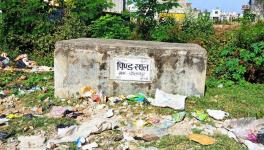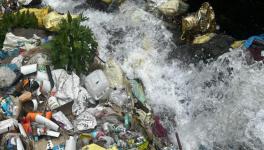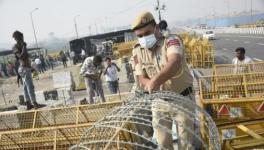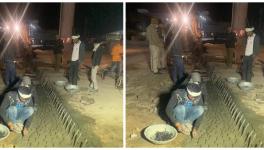Ghazipur Landfill Fire: A Warning to Change Our Centralised Waste Disposal Systems
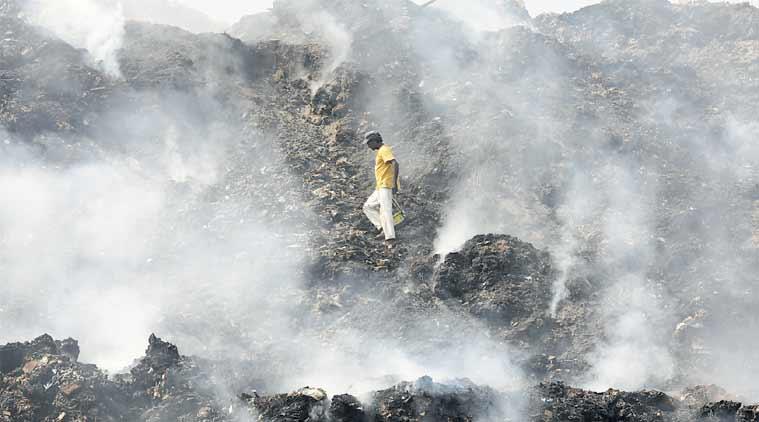
Credits: The Indian Express
In September, the garbage in the Ghazipur landfill collapsed, killing two people. Saturday evening, the same dump caught fire which took over seven hours to be extinguished. This landfill on the eastern boundary of Delhi has been over-saturated since 2002. Despite the recent alarming incidents, garbage continues to be dumped there due to lack of alternatives.
Centralised waste disposal systems involving the use of landfills are the most common way of disposing garbage all over the world. But as the Ghazipur fiasco shows, this system is fraught with major problems. The most urgent one being witnessed by our nation’s capital is the absence of enough land to deal with all the waste that is generated every day. The East Delhi landfill is spread over 29 acres. The EDMC has been unsuccessful in finding an alternative for the site for more than a decade now. Finding such a large area of land, that too for the purpose of dumping wastes, is nearly impossible considering how valuable and scarce land is in Delhi.
Other landfills in the city are suffering from similar problems. It is urgent, therefore, that a different system is devised which does not involve the use of landfills.
The Ministry of Environment, Forests, and Climate Change published new waste management rules last year. These rules propose to solve the problem of rising garbage by burning it in Waste to Energy plants. The plants, which are supposed to generate electricity by incinerating garbage, present challenges of their own. Not the least of which is the high amount of pollution that burning garbage produces. They also continue to encourage centralised mechanisms for waste management.
Three waste to energy plants exists in Delhi already, at three of the four landfills. They are only able to process a small amount of the garbage. The one at Ghazipur, for instance, burns 510 tons of waste to generate 12MW of electricity. This is only a sixth of the 3,000 tons of garbage that are dumped there every day.
Locals in the Ghazipur area have been complaining about the pollution for a long time. Instead of addressing these issues, EDMC is planning to expand the operations of the plant to burn 2,500 tons of waste daily. Proponents of this system talk about the various pollution controls that exist in these plants, but reports have found that such facilities emit air pollutants at rates that are higher than coal-fired power plants.
The major source of energy at these plants is derived from burning plastic and metals, both of which produce toxic pollutants on combustion. Even if huge investments are made in installing pollution control systems, the fact remains that most of our garbage is organic waste which is of low calorific value. The efficacy of these pollution control mechanisms is also unproven, as pollution problems persist in areas around these plants.
There are cities in India which have devised a different solution to the garbage problem and have been successful in eliminating the use of landfills. Panaji and Alappuzha are two such examples. They follow decentralised waste management systems, with emphasis on segregation of waste at source.
Alappuzha in Kerala achieved decentralisation by making residents separate waste into organic and man-made categories and treating organic waste at their homes itself. This organic waste is converted into biogas or compost using equipment subsidised by the state. The biogas is utilised at homes for cooking purposes, while the compost is used in gardens or fields. The man-made waste is sent to different recycling facilities. The result of these efforts was Alappuzha being judged the cleanest city in India by Centre for Science and Environment in Delhi last year.
It is crucial that a decentralised approach to garbage is implemented at a national level. Landfills in Delhi are long past their expiration dates, and alternative sites for them are not to be found. The problem is also in the colossal amount of trash we generate. There is simply not enough space for us to continue dumping it in one place. The environmental problems that arise from the use of landfills are also difficult to solve. Landfills pollute land, water, and air, and make it impossible to live around them. These issues can only be solved if we start dealing with it at an individual level. They cannot be ignored by just filling dustbins and sending the garbage off to be dumped far from our eyes.
Disclaimer: The views expressed here are the author's personal views, and do not necessarily represent the views of Newsclick.
Get the latest reports & analysis with people's perspective on Protests, movements & deep analytical videos, discussions of the current affairs in your Telegram app. Subscribe to NewsClick's Telegram channel & get Real-Time updates on stories, as they get published on our website.









